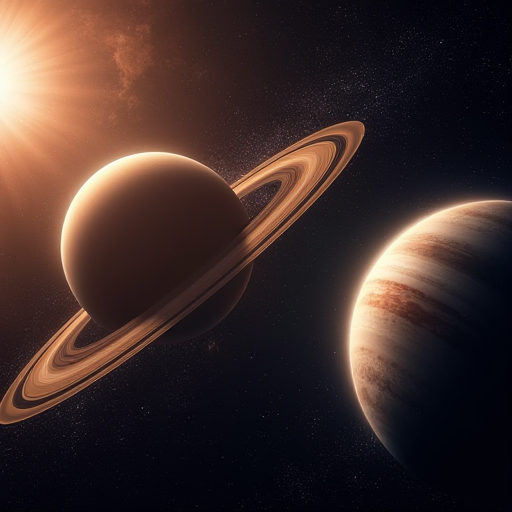
Why Do Planets Have Rings?
The rings of planets have long captivated the imagination of scientists and the public alike. These stunning celestial features, composed of a variety of particles, have led to numerous studies and theories about their formation and existence. This article delves into the reasons why certain planets have rings, the composition of these rings, and the scientific theories behind their formation.
Introduction to Planetary Rings
Planetary rings are collections of particles that orbit around a planet. These particles can range in size from microscopic dust grains to massive chunks of ice and rock. Not all planets in our solar system have rings, but those that do — such as Saturn, Jupiter, Uranus, and Neptune — exhibit rings of varying sizes and compositions.
Formation Theories of Planetary Rings
1. Tidal Disruption
One of the most widely accepted theories for the formation of planetary rings is tidal disruption. This theory suggests that rings form when celestial bodies, such as comets, asteroids, or moons, come too close to a planet and are torn apart by its gravitational forces. This process, known as the Roche limit, occurs when the tidal forces exerted by the planet exceed the structural integrity of the smaller body, causing it to disintegrate and form a ring.
2. Accretion Disk Theory
Another theory is that rings are remnants of the original accretion disk from which the planet formed. In this scenario, the material within the disk that did not coalesce into the planet itself remained in orbit around it. This leftover material eventually evolved into the ring system observed today.
3. Collisional Cascade
The collisional cascade theory posits that rings are the result of collisions between moons or other orbiting bodies. These collisions break the bodies into smaller particles, which then spread out to form a ring. Over time, continuous collisions and interactions keep the ring material replenished and in place.
Composition of Planetary Rings
The composition of rings varies from planet to planet. For instance:
-
Saturn's Rings: Saturn is the most well-known planet with a ring system, and its rings are primarily composed of water ice with traces of rocky material. The rings are bright and easily visible from Earth due to their reflective ice particles.
-
Jupiter's Rings: Jupiter's rings are much fainter and darker than Saturn's, composed mainly of dust particles ejected from its moons due to micrometeoroid impacts.
-
Uranus's Rings: Uranus has a series of narrow and dark rings composed mostly of larger bodies and dust. The rings are believed to be primarily made of ice with some dark radiation-processed organic material.
-
Neptune's Rings: Similar to Uranus, Neptune's rings are dark and consist of dust and small rock particles. They are less defined and more diffuse.
Why Do Only Some Planets Have Rings?
While the exact reasons why only some planets have rings are complex, several factors seem to influence their presence:
-
Proximity to Large Moons: Planets without large moons may be more likely to have rings, as large moons can either absorb potential ring material by accretion or clear it out through gravitational interactions.
-
Gravitational Influence: The planet's gravity must be strong enough to prevent ring particles from either escaping into space or falling into the planet.
-
Age of the Planet: Older planets may have lost their rings over time due to particle migration or accretion onto moons or the planet itself.
Conclusion
The rings of planets are a fascinating and complex feature of our solar system. While much has been learned about their formation and composition, ongoing research continues to uncover new insights. Understanding planetary rings not only helps us learn more about the planets they encircle but also about the processes that govern our solar system as a whole. As technology advances, future missions and observations will undoubtedly shed more light on these celestial wonders.
